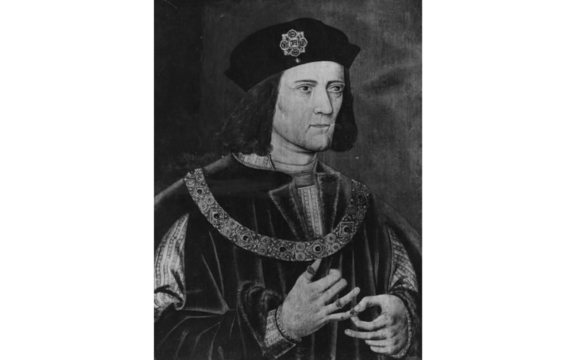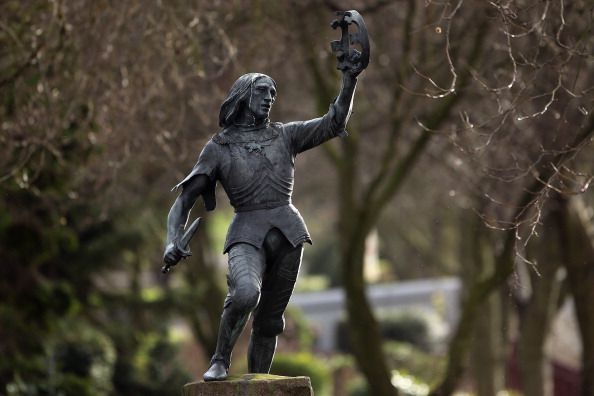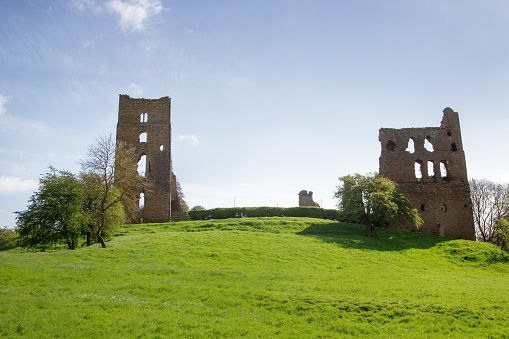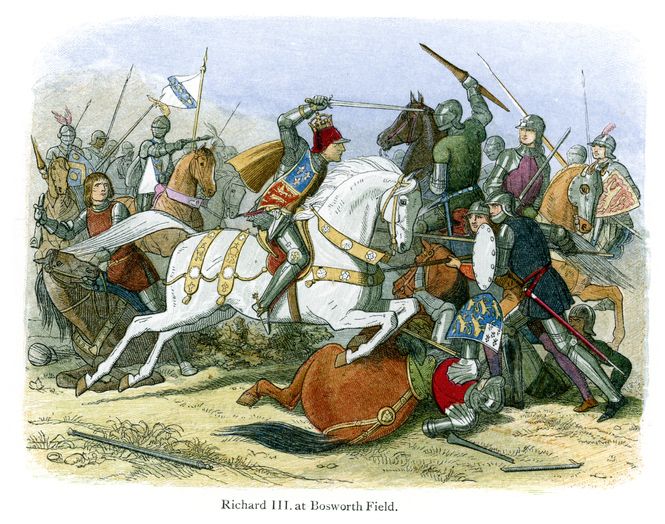
King Richard III.Getty
On the 2nd of October 1452, Richard III was born. King Richard III lived a fascinating life and was embroiled in controversy and mystery. The greatest mystery of all being, was he really a villain?
There the bones lay, thrown unceremoniously into a hastily dug hole beneath the choir of the church of Greyfriars in Leicester. And there they remained, unmarked and unknown for more than 500 years until a team of archaeologists from the University of Leicester discovered them. Richard III, last king of the House of York, last king of the Plantagenet dynasty that had ruled England for 300 years, had been found. His mortal remains are interred in Leicester Cathedral.
Mystery remains
If one of history’s great mysteries has been solved by the discovery of Richard’s bones, however, another still remains: Was King Richard III the villain that history has long portrayed him to be? Up in his home country of Yorkshire, they’ve never been of that opinion, so I went back to Yorkshire to unpack this back story. After all, inquiring British Heritage readers always want to know.
The youngest child of Richard Plantagenet, 3rd Duke of York, was born in 1452 at the Yorkist stronghold of Fotheringhay Castle, Northamptonshire. He spent much of his boyhood, though, in Middleham Castle, Wensleydale, some 50 miles northwest of York, being raised by his cousin, Richard Neville, the Earl of Warwick.
The Wars of the Roses were heating up, essentially a Plantagenet family squabble between the then ruling Lancastrians loyal to the weak King Henry VI and the nobles who had rallied around Henry’s kin, the Duke of York. Young Richard was only 8 when his father was killed in the Battle of Wakefield, and the next year his eldest brother was crowned King Edward IV following the Battle of Towton in 1461. Richard remained largely at Middleham until he was 12 when he joined his brother. For the 20 years until his death on Bosworth Field, Richard’s life was devoted to battle and royal administration.
They were rough years - a time to be looking over your shoulder. Allegiances shifted constantly, treachery was commonplace and armed conflict always in the wings. By the time he was 17, the young knight, now Duke of Gloucester had his own command at his brother’s side. Though Richard did suffer from idiopathic scoliosis, he was by all accounts a skillful and fearless combatant, who played significant roles in Edward IV’s victories in the battles at Barnet and Tewkesbury while he was still a teenager.
Becoming the King
Richard was often on the move, of course. His holdings stretched as far west as Penrith Castle in Cumbria and included castles at Skipton and Richmond, and Sheriff Hutton Castle a few miles northeast of York—the administrative and ecclesiastical capital of the North. In 1480, war with Scotland occupied him for several years. Both in York and across the north, Richard was highly respected as a lord and administrator. Then, in April 1483 his brother the king died, and the Duke of Gloucester headed south.
He had been named Lord Protector of his two young nephews, including Edward IV’s 12-year-old son who was to succeed him as Edward V. The country and its capital were rife with the machinations of jockeying for political power, including the large and influential family of the queen, Elizabeth Woodville. On Richard’s arrival in London, the young princes were ensconced in the royal residence of the Tower of London—where it would have been quite customary for a king to safely await his coronation. Not surprisingly, there are several versions of what happened next.
Richard was informed that his brother’s union to Elizabeth Woodville had been invalid because of an earlier marriage. On June 22, the Bishop of Bath and Wells preached a sermon outside St. Paul’s declaring the boys illegitimate and proclaiming Richard the rightful king. A petition was subsequently presented to the duke asking him to take the throne, to which Parliament later unanimously asserted in a document called the Titulus Regius. Richard accepted and was crowned king on July 6 at Westminster Abbey. Up north in York and in Middleham, Richard’s accession was joyfully celebrated. But it certainly wasn’t everywhere. Every conveyance of power was contested in those turbulent 15th-century decades and no political act went unchallenged. Every noble had something to gain and something to lose.

King Richard III
At Sheriff Hutton
Towers and ramparts of Sheriff Hutton Castle remain, though not advertised in the guidebooks. They stand on private property, in the middle of a farm. There is a public footpath that leads around the complex. Richard III’s only child, Edward of Middleham, had been recently made Prince of Wales when he died there in March 1484 at age 10. His tomb is just down the street in St. Helen’s Church. Edward of Middleham is the only Prince of Wales buried in a parish church.
That summer, the young princes in the Tower disappeared from public view. Then the king, Richard III has always been accused and held responsible. In fact, no one knows what happened to them—another of history’s great mysteries still unresolved. What did happen was that Richard faced armed rebellion led by his former ally the Duke of Buckingham, and then the rallying of the last Lancastrian loyalists to Henry Tudor, the Earl of Richmond. Two years later, the king met Tudor at Bosworth Field, and the rest, as they say, is history.

Sheriff Hutton castle
Lord of the North
Let’s go back to York, where Richard was affectionately known as “The Lord of the North.” The city’s tallest medieval gatehouse is Monk Bar, its upper story given to the city by Richard in 1484. Since 1992, Monk Bar has housed the Richard III Museum. Its exhibition puts Richard on trial for the murder of the two young princes, and visitors are invited to render their own verdict. Frankly, it is pretty camp and even tacky, and, of course, there are a plethora of souvenirs to be purchased. More seriously, however, focusing on what has proven flashy and dramatic, though totally unanswerable for five centuries, has obscured what we do know about the brief reign of Richard III.
After being crowned king for less than six months and having faced down an armed rebellion, in December 1483 Richard established the Court of Requests, where poor people without recourse to legal representation could have their grievances heard. The next month he instituted the notion of bail, to prevent the imprisonment and seizure of property of accused individuals before trial. Richard also directed that law be translated into English from the French it had been written in from Norman times. And he abolished any restrictions on the sale and printing of books, effectively becoming the first monarch to champion freedom of the press.
That’s not the sort of picture we usually see of the last Plantagenet king. Still, it’s not a bad record of accomplishment for a king who spent his two-year reign largely occupied with defending his throne. Every medieval monarch had blood on their hands; it was the necessary and expected nature of their office, whether in Richard’s case that included the blood of his nephews may never be known.
In the North Country, however, where Richard’s Council of the North had materially improved both the rule of law and the economy, the Tudor portrayal of Richard III has never mattered. In York and in Middleham, the king’s death at Bosworth Field was greatly mourned. To this day, on the anniversary of Richard’s death, a requiem mass is said in Middleham church.

King Richard III at Bosworth Field
* Originally published in March 2016.





Comments